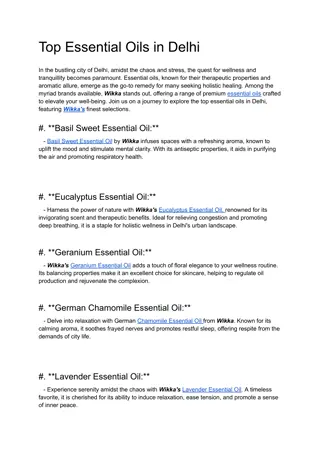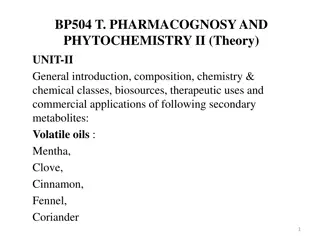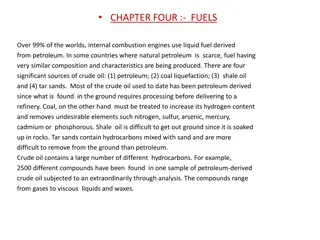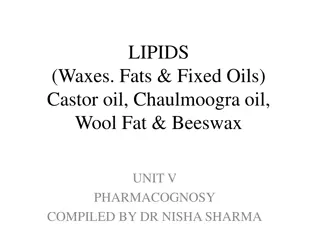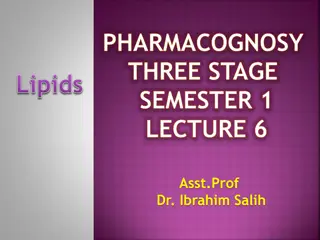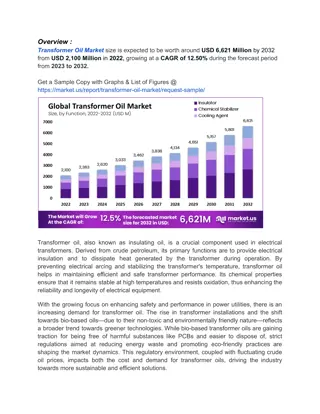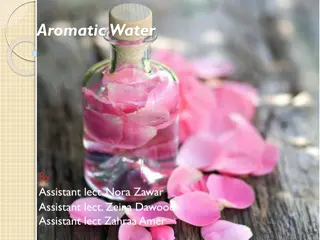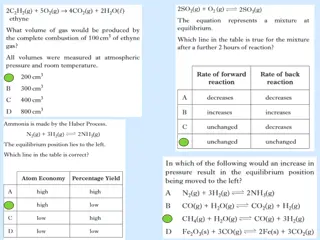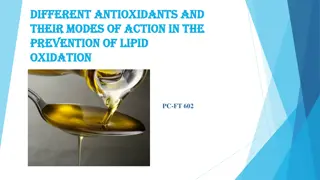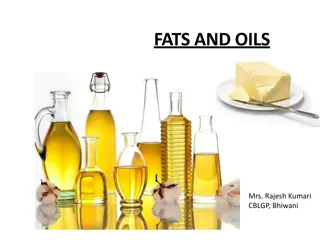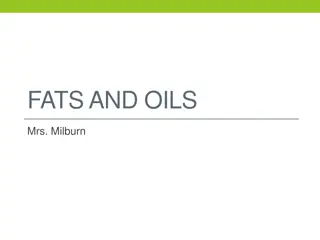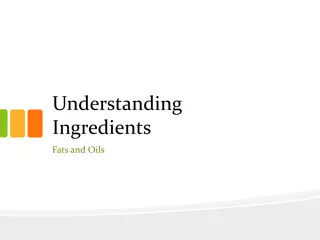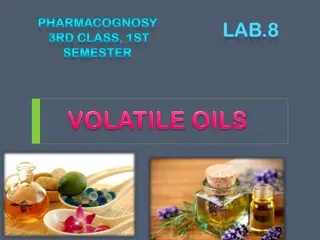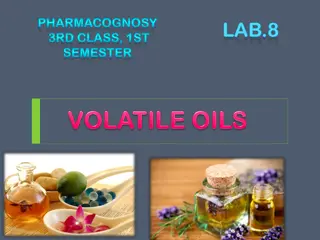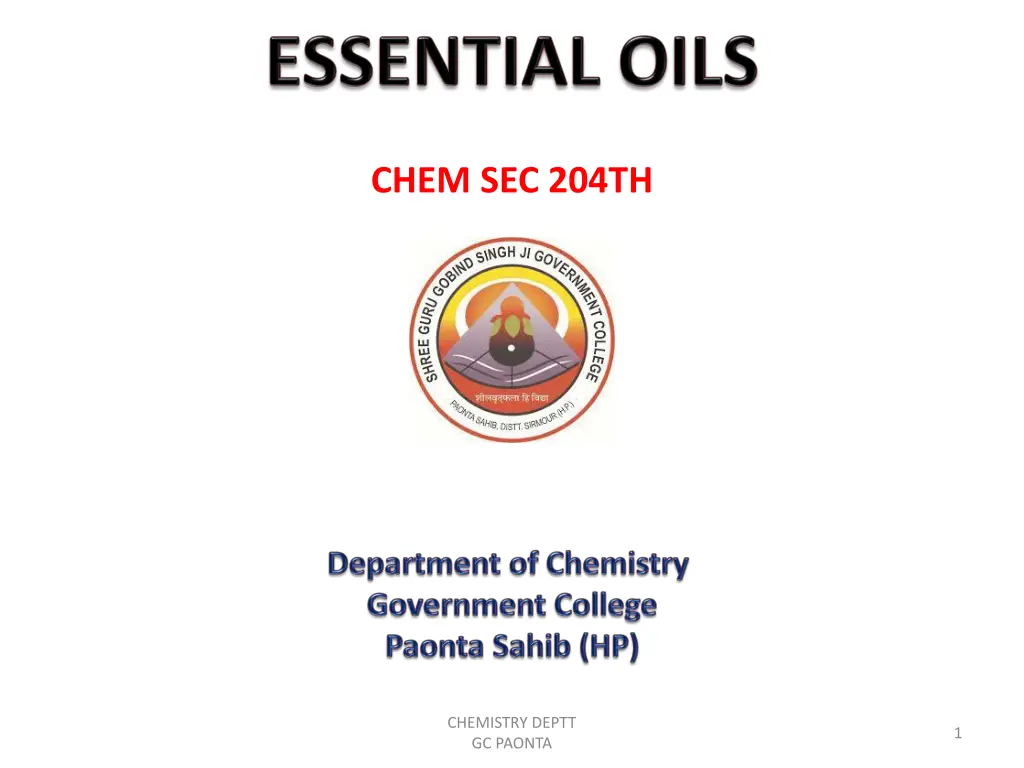
Rose Oil: Extraction, Chemical Composition, and Uses
Discover the process of extracting rose oil, its chemical composition, and various uses in perfumery, skincare, and health. Learn about the key compounds contributing to its fragrance, sources of extraction, and the diverse benefits it offers. Explore the significance of 2-phenyl ethyl alcohol found in nature and its organic properties. Uncover the methods of commercial preparation for this essential compound in the Chemistry Department of GC Paonta.
Download Presentation

Please find below an Image/Link to download the presentation.
The content on the website is provided AS IS for your information and personal use only. It may not be sold, licensed, or shared on other websites without obtaining consent from the author. If you encounter any issues during the download, it is possible that the publisher has removed the file from their server.
You are allowed to download the files provided on this website for personal or commercial use, subject to the condition that they are used lawfully. All files are the property of their respective owners.
The content on the website is provided AS IS for your information and personal use only. It may not be sold, licensed, or shared on other websites without obtaining consent from the author.
E N D
Presentation Transcript
CHEM SEC 204TH CHEMISTRY DEPTT GC PAONTA 1
ROSE OIL 2-PHENYL ETHYL ALCOHOL Chemical constituents Sources Uses CHEMISTRY DEPTT GC PAONTA 2
ROSE OIL It is also known as rose otter or Attar of rose or Rose essence. It is an essential oil extracted from the plants of various types of roses. Rose Otto is extracted through steam distillation, while rose absolutes are obtained through solvent extraction or super critical carbon dioxide extraction. The rose absolutes are more commonly used in perfumery. CHEMISTRY DEPTT GC PAONTA 3
Chemical Composition: The key compounds i.e. - Damascenone, -Damascone, -ionone and rose oxide contributes about 90% of fragrance to rose oil. The other common compounds present in rose oil are, Citronellol, geraniol, nerol, linalool, phenylethyl alcohol, eugenol, methyl eugenol, rose oxide, benzaldehyde, -pinene, -pinene etc. Sources: The rose oil is extracted from the petal, of rose. The major species of rose are cultivated for the production of rose oil. These are I. Rosa damascena (Damask rose): It is widely grown in India, Russia, China, Turkty Bulgaria, Syria, and Pakistan. II. Rosa centifolia (Cabbage rose): It is more commonly grown in Egypt, France and Morocco. CHEMISTRY DEPTT GC PAONTA 4
USES 1. The finest and most important use of rose oil is in perfume industry where they are used for making the most widely used perfumes all over the world. 2. They are also used in creams, face washes, nail polishes, hair sprays etc. 3. Many studies have found that rose oil improves mood, enhances sleep and boosts energy level in the body. 4. Rose oil boosts self-esteem, confidence and mental strength as it acts as antidepressant. Patients with depression are advised to take regular dose of this oil. 5. Rose oil strengthens gums and hair roots. 6. Rose oil acts as good bactericide. It can be used in the treatment of typhoid, diarrhea, cholera, food poisoning, etc CHEMISTRY DEPTT GC PAONTA 5
2-PHENYL ETHYL ALCOHOL It is an organic compound, liquid at room temperature, slightly soluble in water and fully soluble in organic solvents. It occurs widely in nature in most of the essential oils like rose oil. It has a pleasant floral odour. Chemical formula and preparation: It is an organic compound having a phenylethyI group (C6H5-CH2-CH2) attached to - OH group that is why, it is named so. CHEMISTRY DEPTT GC PAONTA 6
It can be prepared commercially via two methods (a) Friedel Craft's Reaction: In this reaction, benzene is treated with ethylene oxide and AlC13. (b) Using Grignard Reaction: In this reaction, phenyl magnesium bromide is treated with ethylene oxide to form an addition product which upon treatment with acid gives 2-Phenylethyl alcohol. CHEMISTRY DEPTT GC PAONTA 7
Natural sources: The natural sources of 2-Phenylethyl alcohol are extracts of rose, carnation, orange blossom. Ylang-ylang, geranium (herbs) and champaca. It is also produced by fungus Candida albicans as an autoantibiotic. USES: 1. It is used as a common ingredient in flavours and perfumery, particularly when odour of rose is desired. 2. It is used as an additive to cigarettes. 3. It is used as a preservative in soap due to its stability in basic conditions. 4. It is used as an antimicrobial and antibiotic substance. CHEMISTRY DEPTT GC PAONTA 8
CHEMISTRY DEPTT GC PAONTA 9

